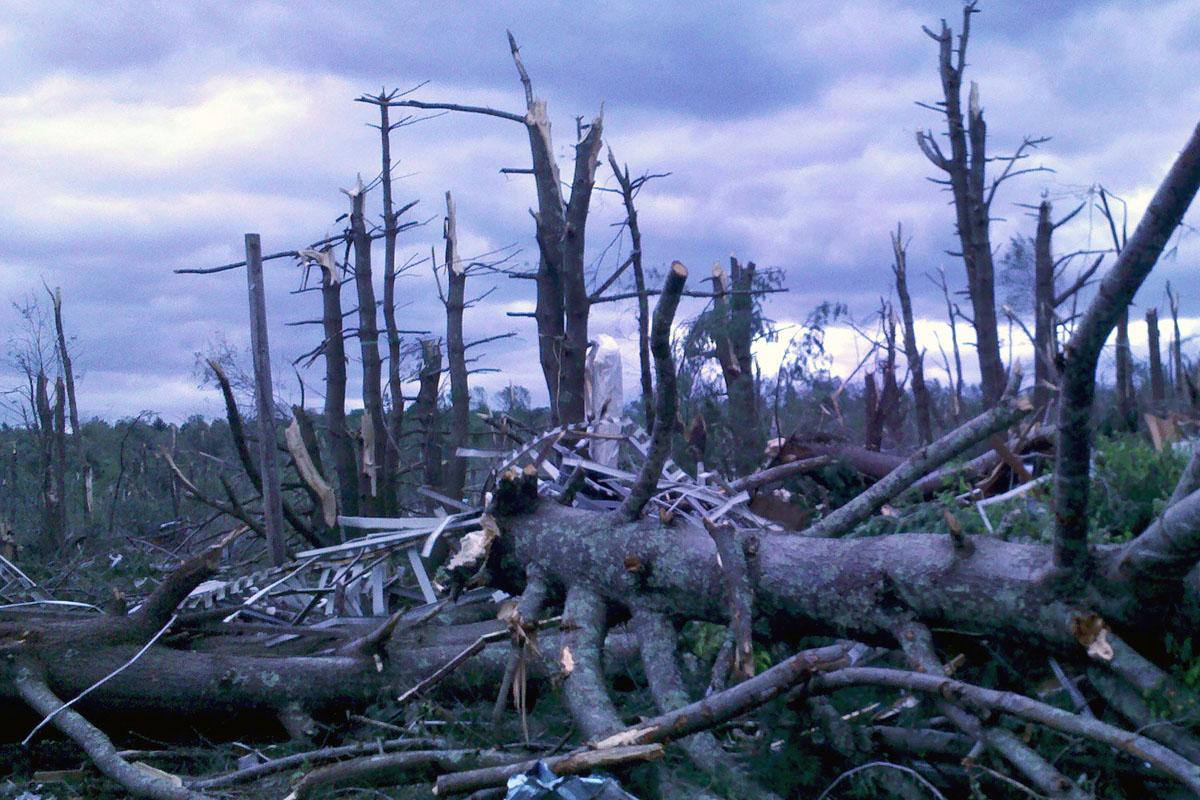Y: Did you hear the news about the tornado, Don? It touched down not too far from here last night.
D: But it was in a forested area, right Yaël? So there wasn’t any damage.
Y: Well, no damage to property or people, but forests suffer from tornadoes and high-speed windstorms too.
D: You mean trees are blown down, right?
Y: That’s just the start of it. When tornadoes and storms blow down trees, they destroy wildlife habitats and, more importantly in the long run, open the door for invasive species to flourish. It can take a long time for forests to fully recover. The finding comes out of research done in Illinois that looked at forested areas affected by three storms: a tornado in 2006, a derecho—which is a kind of windstorm— in 2009, and another tornado in 2017. The researchers chose sites of affected land to study, and selected unaffected parts of the forests that resembled the affected sites in tree size and type, as well as in elevation, slope, and distance to roads and trails. Then they tracked the comparable parcels of land over time to see how the storm-affected areas recovered over time. To nobody’s surprise, invasive species were much more prevalent in the areas affected by the storms than in unaffected areas, even 12 years after the storms hit. Though tree cover increased over time and invasive species decreased, the five major invasives they found all grew well in the shade, which means they can continue growing and spread even farther.
D: Invasive species might be the only species that appreciate tornadoes.










